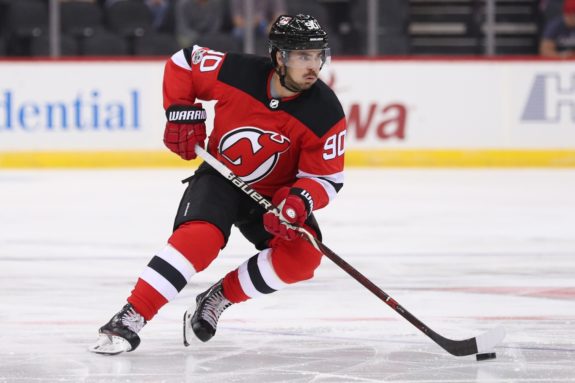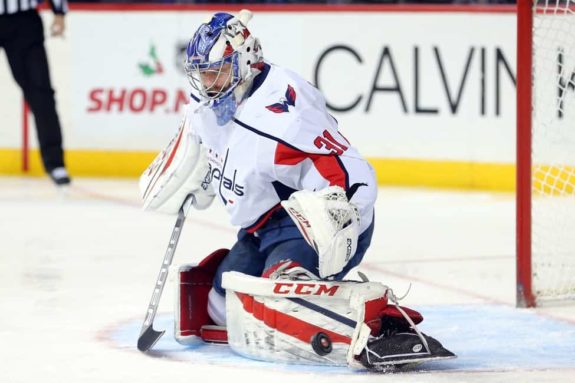In the 2017 offseason, it seemed like very few teams managed the NHL Expansion Draft as poorly as the Washington Capitals. The Caps lost defenseman Nate Schmidt, slated to be a staple in the team’s top four, to the Vegas Golden Knights. But the process was clunkier than the simple loss of an asset.
The real sting came just over a week later, when the Capitals announced they had traded forward Marcus Johansson to the New Jersey Devils for draft picks. The Capitals were forced to trade Johansson to clear cap space after signing forward T.J. Oshie to an eight-year, $46 million dollar contract.
The issue? Johansson had been on the Capitals list of protected players going into the expansion draft. Protecting Johansson, the Capitals squandered a protection on a player they were willing to deal just days later. This seemed like a sure sign of shortsightedness on the part of Capitals general manager Brian MacLellan.
But for the Capitals, with the benefit of hindsight and the reflection of the Stanley Cup to serve as a rear-view mirror, the expansion draft was not nearly as disastrous as it appeared at the time.
Oshie Contract Has Cup Validation
Oshie’s contract was the Capitals’ most contentious move of the summer. Though he was coming off a career year in 2016-17, Oshie’s abnormally high shooting percentage led some to suggest that his 33 goals had been an outlier. The Capitals ran the risk of paying for output that Oshie was incapable of sustaining.

On top of that, to bring Oshie’s contract down to an affordable AAV, the Capitals gave him an eight-year deal that will last until he is 38 years old. Players are known to regress significantly in their mid-late 30s. There was, and still is, significant risk that the contract will weigh down the Capitals when Oshie slows down with age.
But there was a method to this madness. With Alex Ovechkin and Nicklas Backstrom entering their 30s, the Capitals knew they were running out of time to reach for a championship before having to retool completely. The Capitals’ front office estimated that this core had a better chance of bringing home a Stanley Cup with Oshie in the fold. The Capitals gambled long-run stability for short-term success.
The gamble paid off.
While Oshie had a lackluster regular season, he was a major contributor during the Capitals’ Stanley Cup run. Oshie was third on the team in goals during the playoffs. Perhaps more importantly, he was a major cog in the Capitals’ highly effective power play unit. Oshie usually lurked in the high slot when the Caps were on the man-advantage, where his six playoff goals tied the team lead.
Would Washington have won the Cup if they had let Oshie walk and kept Johansson on board? It’s impossible to tell. But no matter how Oshie’s career pans out moving forward, MacLellan will always be able to point to the championship banner hanging from the rafters at Capital One Arena to justify his decision.
Johansson Situation Had Limited Implications
When the Capitals traded Johansson, it looked like the front office had completely misjudged the team’s situation prior to the expansion draft. Had the Capitals not protected Johansson, perhaps they could have kept Schmidt. Instead, the only return they received was a second and third round draft pick. Schmidt was a proven commodity. Draft picks outside the first round often amount to nothing.

But information revealed in the months following the draft indicates that there was simply no scenario that did not end with the Golden Knights selecting Schmidt, regardless of what the Capitals did with Johansson.
The Capitals opted for the ‘7-3-1′ method in the expansion draft, meaning they protected seven forwards, three defenseman, and one goaltender. Had they adopted this method with Johansson exposed, the Capitals’ only hope of holding onto Schmidt would have been Vegas instead selecting Johansson. Given Vegas general manager George McPhee’s comments on just how high he was on Schmidt, it appears unlikely that Johansson would have been enough to steer the Golden Knights away from Schmidt.
Should the Capitals had instead left Johansson exposed and opted for the ‘4-4-1’ method, protecting four forwards, four defenseman, and one goaltender, things would have been a bit more interesting. Of course, the additional protected defenseman would have certainly been Schmidt. But once again, hindsight and new information suggest that Johansson had little to do with the Capitals decision not to use this option.
According to Barry Svrluga of the Washington Post, the Golden Knights offered to not select Schmidt if the Capitals gave them young power forward Tom Wilson and backup goaltender Philipp Grubauer. The Capitals refused.

Reading between the lines a bit, this refusal could have been a sign that the Capitals valued their key forwards above Schmidt. Three of the four protected forwards would have almost certainly been Backstrom, Ovechkin, and budding star Evgeny Kuznetsov. This would have meant that only one of several of the Capitals important producers up front, namely Wilson, winger Andre Burakovsky, and third line center Lars Eller, would have been protected. It appears that the Capitals were more concerned at the prospect of losing one of these forwards than they were at the prospect of losing Schmidt.
Whether the decision to secure the forward group at the expense of exposing Schmidt was a good one is a different debate entirely. The important note is that it was indeed a decision, not just a miscue born of shortsightedness. Moreover, there were several forwards not named Johansson that factored into this decision.
The Capitals Got Out Easy
At the end of the day, the expansion draft turned out much worse for other teams than it did for the Capitals. The Capitals knew what they were losing in Schmidt: a solid, dependable, top-four defenseman. That’s exactly what he ended up being for the Golden Knights. Washington did not, however, suffer from the blatant lapses in talent evaluation that other front offices fell victim to in the draft.

The Columbus Blue Jackets gave the Golden Knights a first round pick to coerce Vegas into selecting William Karlsson. Karlsson went on to score 43 goals for the Golden Knights, more than any Blue Jacket has ever scored in a single season. In giving Reilly Smith to Vegas so they would select Jonathan Marchessault, the Florida Panthers gift-wrapped two-thirds of what ended up being one of the league’s most effective lines.
The Capitals cut their losses with Schmidt. With the slew of other teams that saw deals to protect players blow up in their faces, this proved to be a shrewd decision. Once trade deadline acquisition Michal Kempny brought stability to the Washington top four, the Capitals had largely filled the hole the Golden Knights took from them. There’s plenty of teams that wish they could say the same.